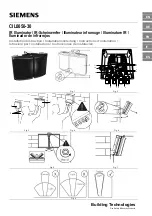
USER MANUAL
19
curved part of the rails and that you use the recommended torque.
•
SEAT ANGLE ADJUSTMENT:
Most people prefer a horizontal saddle, but some riders like the angled
slightly up or down. Your dealer can adjust the angle of the saddle or teach you how to do it. If
you choose to adjust the seat angle yourself and have a single bolt seat clamp on the seat post,
it is essential to loosen the clamp bolt enough to allow for all the splines on the seat post.
Disengage before changing the saddle angle. The splines are fully re-engaged before tightening
the bolt to the recommended torque.
CAUTION:
When adjusting the seat angle with a single plier, always check that the splines on the
contact surfaces of the pliers are not worn. Dirty grooves in the clamp can allow the saddle to move,
causing you to lose control and fall. Always tighten fasteners to the correct torque. Bolts that are too
tight can stretch and warp. Loose bolts can move and tire. Any of these mistakes can cause the beam
to suddenly fail, causing you to lose control and fall.
Small changes in saddle position can have a dramatic effect on performance and comfort. To find
the best seating position, make one adjustment at a time.
CAUTION:
After adjusting the seat, make sure the seat adjustment mechanism is fully tightened before
use. A loose seat clamp or seat post mount can damage the seat post or cam, causing you to lose
control and fall. A properly adjusted seat adjustment mechanism will not allow any movement of the
seat in any direction. Periodically check that the seat adjustment mechanism is tight.
CAUTION:
If you over-tighten the aluminum bolt, it may break while pedaling and loosen the seat. If
in doubt: have your local dealer check the screw.
If despite careful adjustment of seat height, tilt, and fore-aft position, your seat is still uncomfortable,
you may need to use a different seat model.
CAUTION:
Some people have said that prolonged riding with an ill-fitting saddle or one that doesn't
adequately support your pelvic area can cause short-term or long-term damage to nerves and blood
vessels, or even impotence. If your saddle causes pain, numbness or other discomfort, listen to your
body and stop riding until a biomechanic can advise you of the correct position of these elements.
















































